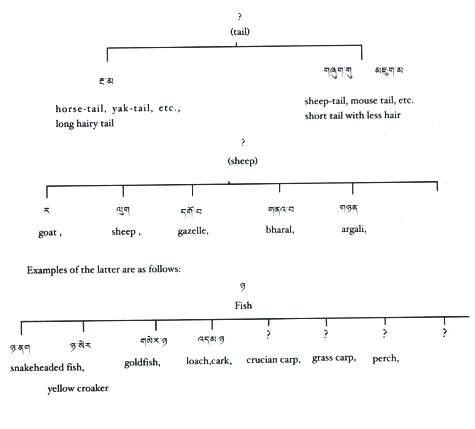1. There can be no modernization in Tibet without modern science and technology, and the dissemination of modern science and technology needs language as an intermediary. As the main common language of the Tibetan people, the Tibetan spoken and written language has played a very important role in the existence and development of the Tibetan people.It has helped to promote and maintain material and ethical progress, and to maintain the integrity of the nation, and so has left a brilliant page in the cultural storehouse of the motherland. Now, as society witnesses progress in science and technology, and confronts the issue of the modernization of Tibet, the big challenge for the Tibetan language is how to follow up on the trends of the times and render outstanding service to society once more.
2. In order to disseminate modern science and technology among the Tibetan ethnic group, it is necessary to create large quantities of new technical terms in the Tibetan language, that reflect developments in modern science and technology Whether or not there are sufficient technical terms within a language reflects the scientific and technological level of the nation concerned. Although the Tibetan language has a long history and rich vocabulary,and there are numerous documents written in Tibetan, it is nevertheless lacking in technical terms that reflect modern science and technology.
After the peacefrul liberation of Tibet, and particularly since the policy of reform and opening up, and taking into account the great social changes and immense progress in modernization that have taken place, a large number of new terms have appeared in the Tibetan vocabulary.Some Tibetan-language scientific and technological terms have been created by lay people, and some by academics and translation specialists.
More than 80,000 technical terms are included in the Han-Tibetan Dictionary, published in 1991 by the Nationalities Publishing House. About a dozen Chinese-Tibetan glossaries,specializing in mathematics, physics, biology, law, health and hygiene, history, and ; geography, have been published in recent years in the Tibet Autonomous Region.In Qinghai province, a Five-Year Plan has been drawn up for the publication of a series of dictionaries on technical terms relating to the natural sciencs. To date, the compilation of approximately 80,000 daily-use technical terms has been completed, covering the eight fields of computers,. chemistry, pharmacology, geography, economical mathematics, physics and modern management. All this reflects how the Tibetan people now seek to sha off religious influences and embrace modern scienti^ knowledge, and to make their ethnic group one of them most culturally advanced in the world. This will be the Chinese or foreign technical term, then traditional dynamic driving force in the economic construction, Tibetan word-building elements and rules are utilized, scientific and technolohical progressed trainig of tal- and also free traslation or caique into Tibetan. When went in Tibet a term does not ^^7 translate into Tibetan, then a 3. There are several different ways of creating tech-transliteration is made.but special attention is paid to nical terms in Tibetan. The main mithod is to make a Tibetan phonetic features and the unique spelling free translation, with a transliteration subsidiary If forms of the Tibetan written language. To be more an appropriate Tibetan word already exists, then it is specific, new terms are created mainly through the selected. If there is no suitable Tibetan word for a following methods:
3.1 Use of Tibetan terms already in existence.
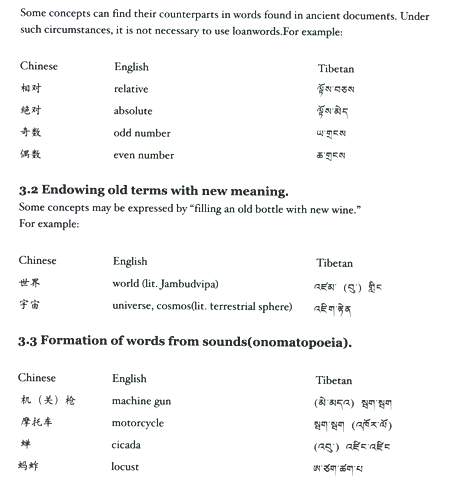
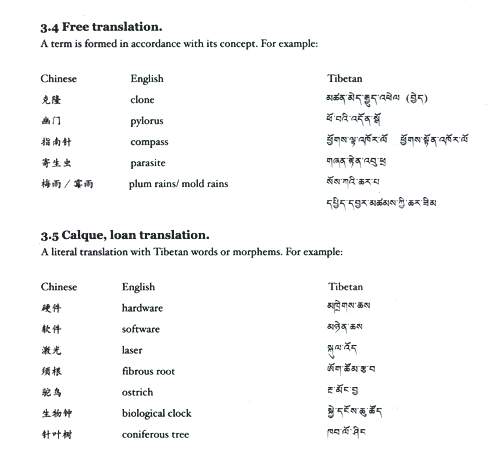
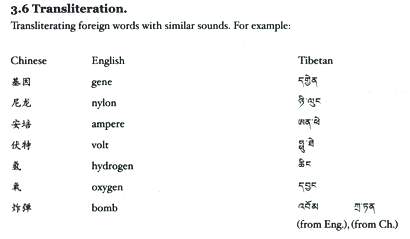

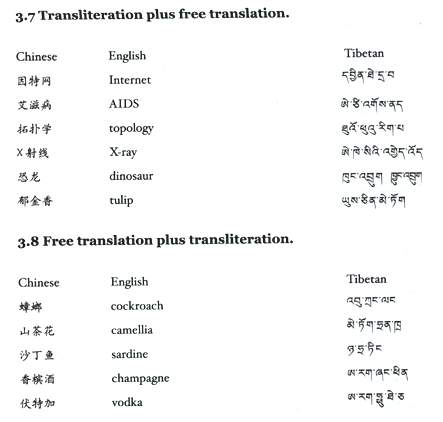
4. Working out science and technology terms is a gigantic, systematic project. Although a great number of new terms have come into existence over the past decades, there nevertheless still remains a huge gap owing to the terrific speed of progress in world science and technology Taking chemistry as an example, there are millions of kinds of chemical materials, and more thanzoo.ooo new kinds of chemical materials are discovered each year. Each has to be named,and each name must distinguish one chemical material from another, and, at the same time,show the relationship between them.Knowledge is increasing at a high speed. It is said that during the i9th century, it doubled every 50 years, while during the 20th century this rate increased to every 10 years. Thus, it may be clearly seen that the Tibetan language has a long way to go if it is to catch up with the times. It is not an easy job to turn this enormous numer of terms,whose content is unfamiliar, into Tibetan, and it is therefore important to handle the problem using the concepts of each basic branch of learning. A concept is a thinking unit that reflects the characterstics of things. Technical terms are names given to scientific concepts. A certain relationship exists between concepts. It may or may not be that between a higher and lower level, i.e. a subordinate hierarchical relationship. Examined from this angle,we may find at times that the Tibetan glossary lacks terms that represent the concept of a higher level, and at other times lacks those that represent the concept of a lower level. Examples of the former are as follows:
